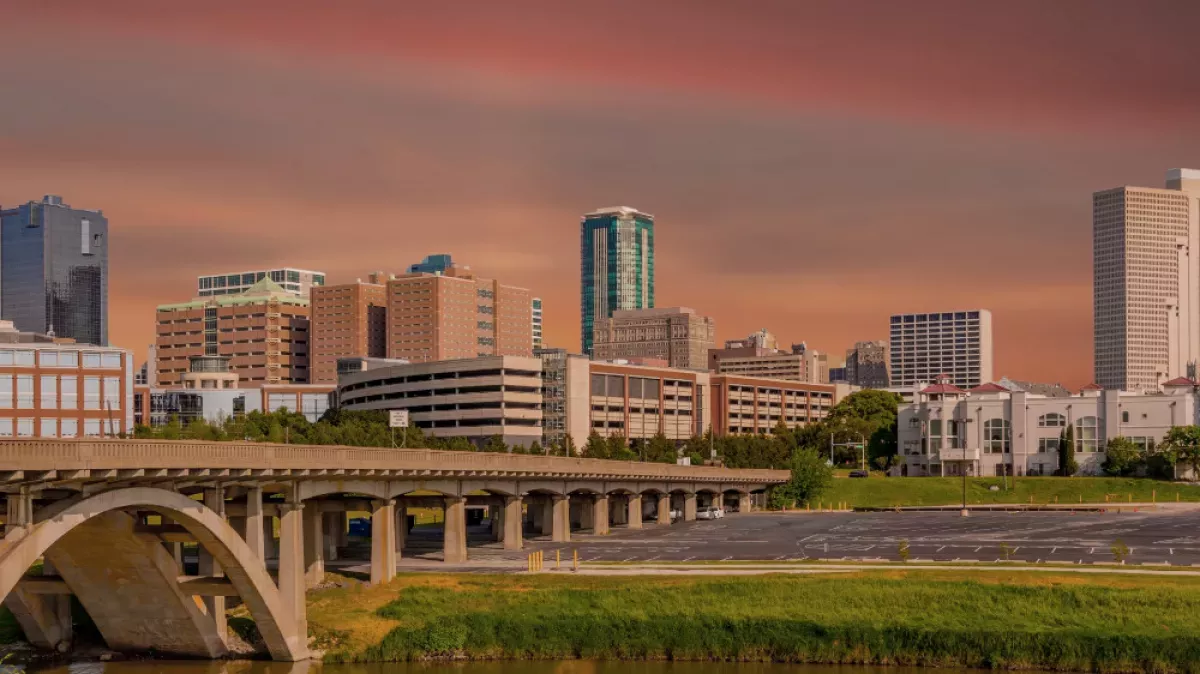Fort Worth, located in Texas, serves as the county seat of Tarrant County and extends into Denton, Johnson, Parker, and Wise counties, encompassing almost 350 square miles. As of 2024, its estimated population is 996,756, positioning it as the fourth most populous city in Texas and the 12th in the United States. Fort Worth stands as the second largest city within the Dallas-Fort Worth metroplex, the fourth most populous metropolitan area in the US and the most populous in Texas.
1900: Hell's Half Acre Expansion
By 1900, Hell's Half Acre, a notorious area in Fort Worth, had expanded to cover four of the city's main north-south thoroughfares.
1900: Decline of Hell's Half Acre
By 1900, the dance halls and gamblers had mostly left Hell's Half Acre, with cheap variety shows and prostitution becoming the primary forms of entertainment.
1901: Bishop & Sherwin Syndicate Acquires Fort Worth Street Railway Company
In 1901, the Bishop & Sherwin Syndicate bought the Fort Worth Street Railway Company, renaming it the Northern Texas Traction Company.
1905: Death of E.S. Terrell
E.S. Terrell, claimed to be the first resident of Fort Worth, died in 1905.
1906: Fort Worth Star Founded
The Fort Worth Star-Telegram was founded in 1906 as the Fort Worth Star.
1911: Reverend Norris's Campaign Against Vice
In 1911, Reverend J. Frank Norris began a campaign against racetrack gambling, vice, and prostitution in Fort Worth.
1911: Our Mother of Mercy Parsonage Built
The parsonage for Our Mother of Mercy Catholic Church was built in 1911.
February 4, 1912: Norris's Church Burned
On February 4, 1912, Reverend J. Frank Norris's church was burned to the ground. His parsonage was also burned down a month later. Norris was charged with arson and perjury but was acquitted.
1914: Lake Worth Dam Completion
In 1914, a large storage dam was completed on the West Fork of the Trinity River, creating Lake Worth.
1917: Military Regulation of Hell's Half Acre
In 1917, after the establishment of Camp Bowie, the military used martial law to regulate prostitutes and barkeepers in Hell's Half Acre.
1917: Closure of Hell's Half Acre
In 1917, the city administration, the federal government, and Reverend Norris worked together to shut down Hell's Half Acre.
1919: The End of Hell's Half Acre
By 1919, Hell's Half Acre was effectively shut down, becoming a part of Fort Worth's history.
1921: Lynching of Fred Rouse
In 1921, during a strike at the Swift & Co. meatpacking plant, African-American strikebreaker Fred Rouse was lynched by a white mob.
1921: Fort Worth Press Founded
The Fort Worth Press, a daily newspaper, began publication in 1921.
1921: Driest Calendar Year
The year 1921 holds the record for the driest calendar year in Fort Worth since records began, with only 17.91 inches (454.9 mm) of precipitation.
April 1922: Wettest Calendar Month
April 1922 was the wettest calendar month on record in Fort Worth, with 17.64 inches (448.1 mm) of precipitation, including a staggering 8.56 inches (217.4 mm) on April 25th.
1923: Tabernacle Baptist Church Built
Tabernacle Baptist Church was built in Fort Worth in 1923.
1924: St. Mary of the Assumption Church Built
St. Mary of the Assumption Church was built in 1924.
1925: Northern Texas Traction Company Expands
By 1925, the Northern Texas Traction Company operated 84 miles of streetcar railways, connecting downtown Fort Worth to various locations including TCU, the Near Southside, Arlington Heights, Lake Como, and the Stockyards.
1929: Our Mother of Mercy Catholic Church Built
Our Mother of Mercy Catholic Church was built in 1929.
1931: Birth of Western Swing
In 1931, Western Swing, the Official State Music of Texas, was created by Bob Wills and Milton Brown and their Light Crust Doughboys band in Fort Worth at the Crystal Springs Dance Pavilion.
1933: Courthouse Built
The Eldon B. Mahon United States Courthouse, serving the Northern District of Texas, was built in 1933.
1934: Morning Chapel C.M.E. Church Built
Morning Chapel C.M.E. Church was built in 1934.
1934: Fort Worth-Dallas Interurban Railway Closes
The Fort Worth-Dallas interurban railway ceased operations in 1934.
1940: New Deal Art Installed
Frank Mechau's New Deal art commission paintings were installed in the Eldon B. Mahon United States Courthouse in 1940.
1948: End of Electric Interurban Railways in Texas
By 1948, all electric interurban railways in Texas were abandoned.
1953: Greater Southwest International Airport Opens
Greater Southwest International Airport (originally Amon Carter Field) opened in 1953 and served as Fort Worth's primary airport.
November 21, 1963: President Kennedy's Visit
President John F. Kennedy arrived in Fort Worth on November 21, 1963, before traveling to Dallas the next day, where he was assassinated.
1964: Establishment of Nature Center
The Fort Worth Nature Center and Refuge was established in 1964 as the Greer Island Nature Center and Refuge.
1970: Racial Composition
In 1970, Fort Worth's population was reported as 72% non-Hispanic white, 19.9% African American, and 7.9% Hispanic or Latino.
1974: Greater Southwest International Airport Closes
Greater Southwest International Airport ceased operations in 1974 after the opening of DFW Airport.
1975: Fort Worth Press Ceases Publication
The Fort Worth Press ceased publication in 1975.
1977: Record Snowfall in a Season
The 1977/1978 season holds the record for the most snowfall in Fort Worth, with a total of 17.6 inches (447.0 mm). The significant portion of this snowfall likely occurred in February 1978.
February 1978: Record Snowfall in a Month
February 1978 saw the most snowfall in a single month in Fort Worth, with a total accumulation of 13.5 inches (342.9 mm).
1978: Cowtown Marathon Begins
The annual Cowtown Marathon, featuring various races including a marathon and ultramarathon, started in 1978 and is held every last weekend of February.
June 26, 1980: Record High Temperature
On June 26, 1980, Fort Worth experienced its hottest temperature ever recorded, reaching a scorching 113 °F (45.0 °C) during the Great 1980 Heat Wave.
June 27, 1980: Record High Temperature
On June 27, 1980, Fort Worth tied its record high temperature set the previous day, again reaching 113 °F (45.0 °C) during the Great 1980 Heat Wave.
1980: National Natural Landmark Designation
In 1980, the Fort Worth Nature Center and Refuge was designated as a National Natural Landmark Site by the Department of the Interior.
1980: Demolition of Greater Southwest International Airport Terminal
The terminal building of the former Greater Southwest International Airport was demolished in 1980.
1987: Bureau of Engraving and Printing Construction Begins
Construction of the second Bureau of Engraving and Printing facility in Fort Worth began in 1987.
December 1990: Currency Production Begins
Currency production began at the Fort Worth Bureau of Engraving and Printing facility in December 1990.
April 26, 1991: Bureau of Engraving and Printing Dedication
The Fort Worth branch of the Bureau of Engraving and Printing was officially dedicated on April 26, 1991.
March 28, 2000: F3 Tornado Hits Downtown
On March 28, 2000, an F3 tornado struck downtown Fort Worth, causing significant damage to buildings like the Bank One Tower.
2000: Fort Worth's Population Growth
At the beginning of the 21st century, in 2000, Fort Worth experienced significant population growth, nearly doubling its size since the turn of the century.
2000: Fastest-Growing City
From 2000 to 2006, Fort Worth was the fastest-growing large city in the United States.
2001: Courthouse Listed on National Register
The Eldon B. Mahon United States Courthouse was listed in the National Register of Historic Places in 2001.
2004: Texas Wesleyan Table Tennis Championships
Texas Wesleyan University won the National Collegiate Table Tennis Association (NCTTA) team championships for three consecutive years, starting in 2004.
2006: Recognition for Livability
By 2006, Fort Worth's growth and development led to it being voted one of "America's Most Livable Communities".
2006: Texas Wesleyan Basketball Championship
Texas Wesleyan University won the 2006 NAIA Div. I Men's Basketball Championship.
July 2007: Barnett Shale Natural Gas Boom
In July 2007, advances in drilling technology made the Barnett Shale's natural gas reserves accessible, benefiting Fort Worth residents with mineral rights.
December 2009: Natural Gas Wells Count
As of December 2009, Fort Worth had over 1,000 natural gas wells tapping into the Barnett Shale.
2009: Commute Mode Share in Fort Worth
In 2009, the majority (80.6%) of Fort Worth commuters drove alone to work, while 11.7% carpooled, 1.5% used transit, 1.2% walked, and 0.1% cycled.
May 10, 2010: Heritage Park Plaza Listed on National Register
On May 10, 2010, Heritage Park Plaza, a Modernist-style park designed by Lawrence Halprin, was added to the US National Register of Historic Places.
December 2010: Streetcar Grant Forfeited
In December 2010, the Fort Worth city council voted to end the streetcar study and forfeited a $25 million Federal Urban Circulator grant.
2010: Jewish Community Estimate
In 2010, the Goldring/Woldenberg Institute of Southern Jewish Life estimated 5,000 Jews in Fort Worth.
2010: Housing and Income Data
The 2010 American Community Survey reported 291,676 housing units in Fort Worth, a median household income of $48,224, and a poverty rate of 21.4%.
2010: Racial Composition
The 2010 U.S. census revealed Fort Worth's racial composition as 61.1% White, 18.9% Black or African American, 3.7% Asian American, 34.1% Hispanic or Latino, and 3.1% of two or more races.
2011: Walk Score Ranking
A 2011 study by Walk Score ranked Fort Worth 47th out of the 50 largest U.S. cities in terms of walkability.
2011: State Ends Contract with Prison Facility
In 2011, the state of Texas chose not to renew its contract with the North Texas Intermediate Sanction Facility, a privately operated prison in Fort Worth.
2011: TCU Rose Bowl Victory
TCU Horned Frogs won the Rose Bowl in 2011.
2012: TCU Joins Big 12
In 2012, TCU joined the Big 12 athletic conference in all sports, ending their "BCS Buster" era.
2014: Beginning of Greater Diversification
From 2014 to 2018, Fort Worth experienced a period of increased diversification, according to the U.S. Census Bureau.
2014: 50th Anniversary of Nature Center
The Fort Worth Nature Center and Refuge celebrated its 50th anniversary in 2014.
2015: Updated Commute Mode Share and Car Ownership
In 2015, the American Community Survey showed a slight increase in driving alone to work (82%), with carpooling at 12%, transit at 0.8%, walking at 1.8%, and cycling at 0.3%. Additionally, 6.1% of Fort Worth households lacked a car.
2015: Fort Worth Weekly Circulation
The Fort Worth Weekly, an alternative newspaper, had an approximate circulation of 47,000 in 2015.
2015: Wettest Calendar Year
The year 2015 was the wettest calendar year on record for Fort Worth, with a total of 62.61 inches (1,590.3 mm) of precipitation.
2016: Decrease in Carless Households
In 2016, the percentage of Fort Worth households without a car decreased to 4.8%, compared to the national average of 8.7%. Fort Worth averaged 1.83 cars per household.
2018: End of Diversification Period
By 2018, the period of increased diversification noted by the U.S. Census Bureau concluded.
2018: Housing and Income Data
In 2018, Fort Worth had 337,072 housing units, a median income of $58,448, and a poverty rate of roughly 15.6%.
2018: Racial Composition
In 2018, Fort Worth's racial demographics shifted to 38.2% non-Hispanic white, 18.6% Black or African American, 4.8% Asian American, 35.5% Hispanic or Latino, and 2.1% of two or more races.
2018: Population Estimate
In 2018, the American Community Survey estimated Fort Worth's population to be near 900,000 residents.
January 10, 2019: TEXRail Service Begins
On January 10, 2019, the TEXRail service started operations, providing train service from Downtown Fort Worth to Dallas/Fort Worth International Airport's Terminal B.
July 2019: ZIPZONE Microtransit Service Launches
In July 2019, Trinity Metro launched ZIPZONE, an on-demand microtransit service in partnership with Via Transportation, providing first-and-last mile connections for TEXRail and bus commuters.
2019: Diversity Study
A 2019 study identified Fort Worth as one of the most diverse cities in the United States.
2019: Population Estimate
In 2019, Fort Worth's population grew to an estimated 909,585 residents.
2020: Non-Christian Community Sizes
A 2020 study estimated 37,488 Muslims and 2,413 Jews in Fort Worth, making them the second- and third-largest religious communities after Christians.
2020: Continued Growth and Diversification
In 2020, Fort Worth's mayor announced the city's continued population growth to 20.78%. The U.S. Census Bureau noted increasing diversification from 2014-2018.
2020: Southern Baptist Community Size
In 2020, Southern Baptists constituted the second-largest Christian denomination in the Fort Worth metropolitan division, with 347,771 adherents.
2020: Panther City Lacrosse Club Founded
Panther City Lacrosse Club of the National Lacrosse League was founded in 2020 and played its games at Dickies Arena.
2020: Official Census Count
The 2020 United States census officially recorded Fort Worth's population as 918,915.
2020: Racial Composition
The 2020 census indicated a more diverse Fort Worth, with 36.6% non-Hispanic white, 34.8% Hispanic or Latino, 19.2% Black or African American, and 5.1% Asian American.
February 11, 2021: I-35W Pileup
On February 11, 2021, a 133-vehicle pileup on I-35W, caused by freezing rain and ice, resulted in at least six deaths and numerous injuries.
February 2021: Fort Worth Report Announced
The Fort Worth Report, a nonprofit news organization, announced its intentions in February 2021.
April 2021: ZIPZONE Fare Update
As of April 2021, ZIPZONE rides cost a flat $3 or are included with multi-ride Trinity Metro local tickets.
April 2021: Fort Worth Report Launched
The Fort Worth Report officially launched its newsroom in April 2021.
2021: Austin Bold FC Relocates to Fort Worth
In 2021, Austin Bold FC relocated to Fort Worth, giving the city a USL Championship club.
2022: Population Estimate
In 2022, census estimates placed Fort Worth's population at approximately 956,709 residents.
2023: Baptist Church Counts
As of 2023, the Baptist General Convention of Texas reported 167 churches near Fort Worth, while the Southern Baptists of Texas Convention listed 117.
2023: Catholic Community Size
By 2023, the Roman Catholic Diocese of Fort Worth estimated approximately 1,200,000 Catholics in the area.
2023: Newspaper Circulation
In 2023, the print circulation of the Fort Worth Star-Telegram was 43,342.
2024: Panther City Lacrosse Club Folded
In 2024, the Panther City Lacrosse Club, a professional lacrosse team in Fort Worth, ceased operations.
2024: 2024 US Census Estimate
The 2024 United States census estimated Fort Worth's population to be 996,756, making it the fourth-most populous city in Texas and the 12th-most populous in the United States.
Mentioned in this timeline
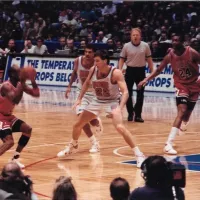
Basketball is a team sport played on a rectangular court...
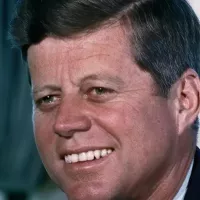
John F Kennedy JFK was the th U S President...
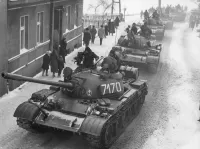
Martial law is the imposition of military rule in place...

The Catholic Church the largest Christian church globally with over...
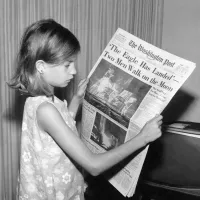
News encompasses information about current events disseminated through various media...
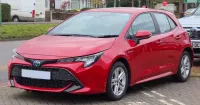
A car also known as an automobile is a wheeled...
Trending
46 minutes ago Kamilla Rakhimova switches nationality to Uzbekistan: Tennis career update and reactions.
46 minutes ago New Zealand Man Charged with Theft After Swallowing $20K Fabergé Pendant
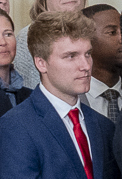
2 hours ago Cam Spencer Shines Off Bench for Grizzlies, Continuing Impressive Performance

2 hours ago Chet Holmgren's Champion Comeback: Avoiding Hangover, Praised by Shai Gilgeous-Alexander, Potential Comparisons
2 hours ago Cathay Pacific's Aria Suites to Launch on San Francisco Route; Frequent Flyer Concerns Arise.

2 hours ago Jonathan Kuminga Trade Rumors: Warriors, Pacers Considering Deals for Forward.
Popular
Aftyn Alyssa Behn is an American politician currently serving as...
Matt and Ross Duffer known as the Duffer Brothers are...

XXXTentacion born Jahseh Dwayne Ricardo Onfroy was a controversial yet...

Stranger Things created by the Duffer Brothers is a popular...
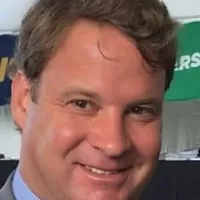
Lane Kiffin is an American football coach currently serving as...

William Franklin Graham III commonly known as Franklin Graham is...
